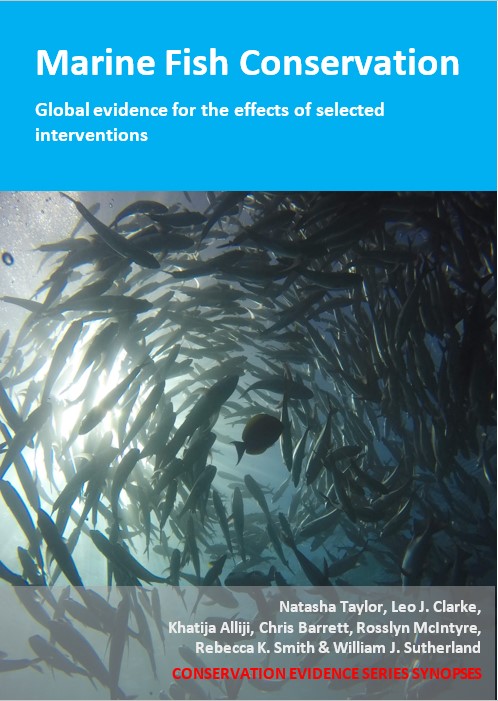Cease or prohibit shellfish dredging
-
Overall effectiveness category Awaiting assessment
-
Number of studies: 1
View assessment score
Hide assessment score
How is the evidence assessed?
-
Effectiveness
not assessed -
Certainty
not assessed -
Harms
not assessed
Study locations
Supporting evidence from individual studies
A before-and-after, site comparison study in 1981–1998 of a fjord in the North Sea, Denmark (Hoffmann & Dolmer 2000) reported that prohibiting all towed fishing gears (mainly mussel dredges) in an area had no effect on the abundance and species richness of bottom-dwelling fish in the following 10 years, and compared to open areas. Data were not statistically tested. In trawl surveys, fish abundance (closed: 0–13 kg/30 min, open: 0–31 kg/30 min) and number of species (closed: 4–11, open: 1–9) varied between years but no effect of the closure was detected in either area. In set net and trap samples, catch rates were higher in the fished area (closed: 37–486 g/fishing unit, fished: 132–915 g/fishing unit) but there was no difference in the number of species (closed: 3–8, fished: 4–8). In 1988, a 40 km2 mussel Mytilus edulis fishing ground in the Limfjord was closed to all towed fishing gears (to prohibit mussel dredging as the only towed gears in use) and only static fishing gears allowed. Fish data was collected by two methods: annual trawl surveys from 1981–1998 in August/September at two stations inside and two just outside the closed area; and in 1995, 1996 and 1997, experimental fishing with fixed set nets (48 deployments) and eel traps (38 deployments) at three locations inside and three outside the closed area. Catch rates and number of species were recorded. No fish species groups (other than demersal) or individual species were specified.
Study and other actions tested
Where has this evidence come from?
List of journals searched by synopsis
All the journals searched for all synopses
This Action forms part of the Action Synopsis:
Marine Fish Conservation





)_2023.JPG)














